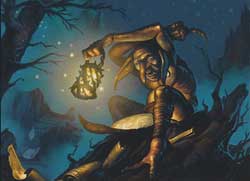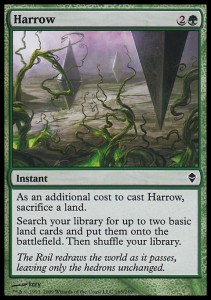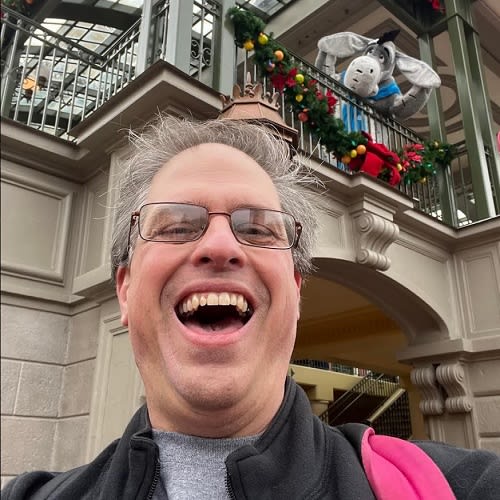Looking around the Magic writer's community this week we find a bunch of Austin stories. Some good, some bad but almost all of them have too much filler info. I really don't care how good the fajitas were, that you slept in a bed that looked like it had Urine stains, that you paid $23 for a taxi that followed right behind a Public transportation bus that could have cost you 75 cents, or even that couldn't prepare for the LCQ's because Zendikar wasn't online yet. If I had an Austin article for you it would be full of card stock only because that's how I roll.
I do want to give some props to my local scene. At the Zendikar pre-release one of the players hit like 3 or 4 Punishing Fire. We often will talk about our cards while building. It's really casual and fun loving. He yells "is there a card that makes your opponent gain life?" Dustin, our store judge/tournament director, says “Grove of the Burnwillows but you can't play it today since it isn't in Zendikar”. How tech does that comment seem now?
So instead of dwelling on Austin and the new Extended, today I am continuing my look at the Sealed Format and how to base you choices when it comes to building your deck. If you were absent please click here.
In quick summary the last lesson taught us not to look at rarity for value, how to judge mana requirements, and the Expected Turn of Play (ETP). But mana isn't the only cost involved with cards and just knowing the ETP isn't good enough. So today I want to delve deeper into the potential costs of a card and begin looking at how we can determine if a card is worth that costs. I can already see myself going the whole class period and still have more to cover so stay alert. I'm going "bell to bell" today, not even taking attendance.
Other than mana costs and double colored mana costs there are other costs associated with cards. Most notably they are card cost and life cost. When players talk about these costs they mostly call them "drawbacks." Cards with drawback usually will give us some kind of bonus with the ETP.
 First let's look at some cards that have a card cost associated with them. My current favorite is Goblin Guide. While the Guide is a rare so you are unlikely to see him in your card pool he does provide an excellent example to work from. The ETP of Goblin Guide is basically turn 1. While it is possible for your deck to miss one of its colors which would delay the Guide from being played on turn 1 we still say it's ETP is 1. For a turn 1 play we get 2 power and Haste. That's quite a package but what of the "drawback." Basically just attacking with the Guide has an approximate 33% chance of giving your opponent an extra card. Of course the exact number is only determinable if you knew the exact make-up of your opponent's deck. And the subtle knowledge factor of knowing exactly what is going into your opponents hand is a little to your advantage. But with all of that we basically have a 6 damage gives 1 free card to your opponent (on the average).
First let's look at some cards that have a card cost associated with them. My current favorite is Goblin Guide. While the Guide is a rare so you are unlikely to see him in your card pool he does provide an excellent example to work from. The ETP of Goblin Guide is basically turn 1. While it is possible for your deck to miss one of its colors which would delay the Guide from being played on turn 1 we still say it's ETP is 1. For a turn 1 play we get 2 power and Haste. That's quite a package but what of the "drawback." Basically just attacking with the Guide has an approximate 33% chance of giving your opponent an extra card. Of course the exact number is only determinable if you knew the exact make-up of your opponent's deck. And the subtle knowledge factor of knowing exactly what is going into your opponents hand is a little to your advantage. But with all of that we basically have a 6 damage gives 1 free card to your opponent (on the average).
Some spells have card cost built directly into them. That is where playing the spell automatically makes you lose cards and therefore create card disadvantage. Magma Rift has an ETP of 3 and deals 5 damage to a creature which is decent but not awesome. However as an additional cost to play Magma Rift you have to sacrifice a land. This is inherent card disadvantage. The real twist is the fact that by playing the Rift you have inherently added 1 to all of your other cards ETP. When you factor this in we can really have issues. If you play Magma Rift you better be pretty sure the rest of your deck can handle less mana for the rest of the game.
 When considering cards that sac in Zendikar I immediately think of Harrow as well. Harrow does require the same land sacrifice but actually returns you two back. In terms of card count it is a wash. -2 cards to get +2 lands. However, the real benefit of Harrow is the fact that all ETP's are -1 as long as they are greater than 3. Or a sum greater than 3. For example playing 2 different spells with an ETP of 3 on the same turn. This can happen on turn 5 post-Harrow. So really Harrow is a made for mana hungry decks with high ETP's.
When considering cards that sac in Zendikar I immediately think of Harrow as well. Harrow does require the same land sacrifice but actually returns you two back. In terms of card count it is a wash. -2 cards to get +2 lands. However, the real benefit of Harrow is the fact that all ETP's are -1 as long as they are greater than 3. Or a sum greater than 3. For example playing 2 different spells with an ETP of 3 on the same turn. This can happen on turn 5 post-Harrow. So really Harrow is a made for mana hungry decks with high ETP's.
Life costs has become less and less frequent in our game. Yawgmoth's Bargain was so Uber broken that Wizards has become really gun shy when printing cards that cost life voluntarily. In Zendikar we do have a couple of examples. Vampire Lacerator is basically Goblin Guide's life equivalent only it doesn't have haste and the life loss is almost a guarantee whenever you would want to play him. This just goes in as another piece of evidence that Wizards wants us to think that cards are worth more than life. Remember earlier we gave up 1 card for 6 damage. The Lacerator gives up 3 life for the same 6 damage. I really think they should have given the Lacerator Intimidate to keep it more balanced since you have to make the payment before you even get to attack.
One of my favorite cards right now is Blood Seeker. It is just the opposite of the Lacerator. It is just a 1/1 with an ETP of 2 which is way late except that it causes your opponent to lose life at every creature drop. That can be quite the riddle in the creature biased format like sealed. The card that I would like to see is a 1/1 for 2 that makes your opponent pay 1 extra mana for each creature investment. That would a study in controlling ETP for sure. Probably too far on the "not fun" scale since seeing one followed by a second from your opponent would be sick.
 There is one more cost that we need to keep in mind as we build our deck. This is one that we probably have the least control over. That cost is the Mana Waste. The Mana Waste happens in almost every game ever played and it happens even more in Sealed. At its simplest definition Mana Waste is when we have Mana available but just are unable to use it. For an example I have just played my 3 land and in my hand I am looking at Armament Master, Kazandu Blademaster, Kor Outfitter, Day of Judgment, and Caravan Hurda. You've essentially wasted a mana. Through no direct fault of your own you have no option but to leave a land untapped and have nothing to spend it on.
There is one more cost that we need to keep in mind as we build our deck. This is one that we probably have the least control over. That cost is the Mana Waste. The Mana Waste happens in almost every game ever played and it happens even more in Sealed. At its simplest definition Mana Waste is when we have Mana available but just are unable to use it. For an example I have just played my 3 land and in my hand I am looking at Armament Master, Kazandu Blademaster, Kor Outfitter, Day of Judgment, and Caravan Hurda. You've essentially wasted a mana. Through no direct fault of your own you have no option but to leave a land untapped and have nothing to spend it on.
That's the benefit of cards like Crypt Ripper. With the Ripper in play we never have mana waste. Just having it open means that my Ripper can be bigger at my discretion. Even if there is no need to pump it there is always that potential. Just sitting with two black available basically makes the Ripper un-Bolt-able. Be careful though pumping is a commitment and you shouldn't do it until you have to. The other day on of my students seeing no blockers and with 3 black open pumped and then attacked. In response her opponent cast Burst Lightning. The Lightning resolves first and killed the Ripper thereby wasting the mana anyway. How should she have played it? (Answer in the comments)
Notice I said no direct fault of your own causes mana waste but indirectly we can facilitate the white scenario I used earlier. If this was your hand in draft I would guess that you felt a mono-white Kor focused build would be good. Maybe you got a couple of good equipments as well and you are hoping to exploit that angle. But if you look at a Kor focused deck chances are you have way too many 2 drops to fit a normal mana curve. When this happens you force some of your ETP of 2 cards to become ETP of 3. This is why it is so important to look at your curve before you make your final decision.
What I do is curve my cards before I color sort. That's right first thing. After ripping open my packs (though I do miss the opening of a box) I stack all cards by their ETP. Then I pull out my bombs and finally color sort. Now when I look at my colors I can already see the potential curve without much effort. Then I let that curve or lack thereof to help me decide which way to build.
And lastly it is important to note that some cards have a lot more influence than we may think. The problem is most of us only consider the "now" of a card and not it's long term impact. My favorite card that exemplifies this is Sign in Blood. To the novice it's life loss is just to high. "I can't play that it takes 10% of my life." To most of the community it's 2 cards for 1. "That extra card will help insure that I win even though I have less life right now." To me it's a Turn modifier. "Playing this gives me more cards and therefore more consistent plays for the rest of the game but it will effectively bypass my turn 2." In constructed that isn't so bad since I can design my deck accordingly but in limited it can be a game changer that you don't even notice until turn 5 or 6 and everything that your opponent plays seems to be one notch better than your plays.
Class time is running out again and still we have only talked about cost. Next class I'll start breaking down creatures and comparing their ETP to their benefits. So head on out of here, it's Sloppy Joe day.
Class dismissed.


























